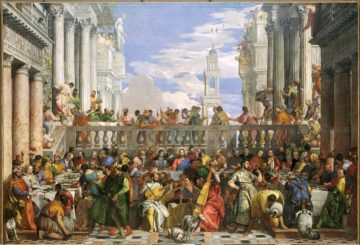Terry Hartle in The Christian Science Monitor:
 As his armies conquered most of Europe, Napoleon Bonaparte demonstrated an insatiable desire to steal art. These were not smash-and-grab operations. According to Cynthia Saltzman’s marvelous book, “Plunder: Napoleon’s Theft of Veronese’s Feast,” he sought out experts to advise him on which cultural treasures to ship back to Paris. Napoleon wanted to expand the art collection in the Louvre palace. He wrote to France’s five-member governing committee to “send three or four known artists” to choose the best paintings and sculptures.
As his armies conquered most of Europe, Napoleon Bonaparte demonstrated an insatiable desire to steal art. These were not smash-and-grab operations. According to Cynthia Saltzman’s marvelous book, “Plunder: Napoleon’s Theft of Veronese’s Feast,” he sought out experts to advise him on which cultural treasures to ship back to Paris. Napoleon wanted to expand the art collection in the Louvre palace. He wrote to France’s five-member governing committee to “send three or four known artists” to choose the best paintings and sculptures.
The peace treaties Napoleon imposed on defeated foes usually required artworks to be forfeited. A 1796 treaty with Pope Pius VI, for example, was worded: “The Pope shall deliver to the French Republic one hundred paintings, busts, vases or statues at the choice of the Commissioners who will be sent to Rome.” At one point he even boasted to the governing committee, “we have everything that is a work of art in Italy, save for a small number of objects in Turin and Naples.”
The French justified this theft not only as part of the spoils of war but also as a way of demonstrating the French Republic’s dominant position in Europe’s new military, political, and cultural order, Saltzman writes. Possessing these objects would demonstrate “their passion for knowledge, their respect for history, their discipline, rationality, and expertise in the fine arts.”
Saltzman tells this story by focusing on the fate of one particular masterpiece: Paolo Veronese’s “The Wedding Feast at Cana.” Painted for the monastery of San Giorgio Maggiore in Venice in 1563, the painting recounts Jesus’ first miracle, the changing of water into wine. The giant canvas measures 22 feet by 33 feet and includes 130 life-size figures arranged across a richly colored and beautifully painted canvas.
More here.
